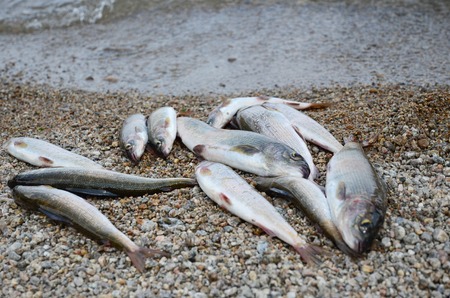1. Overview of Graphite and Fiberglass Rods
When it comes to choosing the right fishing rod, American anglers often find themselves deciding between graphite and fiberglass rods. These two materials have shaped the fishing experience in the United States for decades, each offering unique benefits and characteristics that suit different fishing styles and conditions.
What Are Graphite Fishing Rods?
Graphite rods are made from carbon fiber, a material known for its lightweight strength and sensitivity. First introduced in the 1970s, graphite quickly gained popularity among bass anglers and tournament fishermen across the U.S. because these rods allow you to feel even the slightest nibble. The construction involves weaving thin sheets of carbon fiber, which are then bonded with resin to create a strong yet flexible blank (the main shaft of the rod).
Key Features of Graphite Rods
- Sensitivity: Excellent for detecting light bites
- Weight: Very lightweight, making all-day casting easier
- Power: Offers fast action, meaning they bend mostly at the tip
- Common Use: Popular for bass fishing, finesse techniques, and situations where precision matters
What Are Fiberglass Fishing Rods?
Fiberglass rods have been around since the late 1940s and quickly became an American classic, especially before graphite came on the scene. These rods are constructed from woven glass fibers coated with resin. Known for their durability and flexibility, fiberglass rods are often a go-to choice for beginner anglers or those targeting larger, hard-fighting fish like catfish or redfish.
Key Features of Fiberglass Rods
- Durability: Extremely tough—can handle rough treatment and heavy loads
- Flexibility: More bend throughout the rod (“parabolic” action), forgiving when fighting big fish
- Weight: Heavier than graphite but very sturdy
- Common Use: Great for trolling, crankbait fishing, saltwater species, and family outings where toughness counts
A Quick Comparison Table
| Graphite Rods | Fiberglass Rods | |
|---|---|---|
| Sensitivity | High | Medium |
| Weight | Lightweight | Heavier |
| Toughness | Brittle under extreme stress | Tough and durable |
| Bend/Action | Fast (tip bends) | Moderate/Slow (rod bends more evenly) |
| Main Uses in U.S. | Bass fishing, finesse rigs, competitive angling | Trolling, crankbaits, saltwater, beginners/kids |
| Price Range* | $40–$400+ | $30–$200+ |
| *Prices can vary widely depending on brand and features. | ||
The Importance of Material Choice for American Anglers
The choice between graphite and fiberglass isnt just about personal preference; its about matching your gear to your local waters and target species. Whether youre flipping jigs for largemouth bass on Lake Okeechobee or chasing stripers off the Jersey Shore, knowing how these materials perform helps you get more out of every trip. As we continue this series, well break down how these rods stack up in real-world fishing situations across America.
2. Performance and Sensitivity
Understanding Sensitivity in Fishing Rods
Sensitivity is a big deal for anglers. It’s all about how well you can feel what’s happening at the end of your line—like subtle bites or changes in bottom structure. When comparing graphite and fiberglass rods, the difference in sensitivity is pretty clear.
| Rod Material | Sensitivity Level | Best For |
|---|---|---|
| Graphite | High – You’ll feel even the lightest nibble. | Bass fishing, finesse techniques, situations where detecting small bites matters |
| Fiberglass | Moderate – More forgiving, but not as “touchy.” | Trolling, crankbait fishing, catfishing, saltwater fishing with heavier lures |
Casting Distance and Accuracy
If you’re looking to cast farther or need pinpoint accuracy, the material of your rod plays a role. Graphite rods are lighter and stiffer, which usually means longer casts and better control over lure placement. Fiberglass rods are heavier and more flexible, so they tend to lob baits rather than fire them out.
| Rod Material | Casting Distance | Accuracy |
|---|---|---|
| Graphite | Longer casts due to stiffness and lightweight build. | High—great for targeting specific spots. |
| Fiberglass | Shorter overall distance; best for close-to-medium range. | Moderate—less precise than graphite. |
Performance Across Different Fishing Styles
Freshwater Fishing: Bass, Trout, Panfish, and More
If you like finesse fishing for bass or trout in lakes and rivers, graphite rods really shine. Their sensitivity lets you feel even gentle bites, which can make all the difference with finicky fish. Fiberglass rods work well if you’re tossing crankbaits or topwater lures where some flexibility helps keep fish hooked during the fight.
Saltwater Fishing: Inshore and Offshore Adventures
Saltwater anglers often deal with bigger fish and heavier lures. That’s where fiberglass rods come into play—they’re tougher and handle rough treatment better. Still, many inshore fishermen prefer graphite for its lightness and quick response when targeting species like redfish or speckled trout.
![]()
3. Durability and Flexibility
When it comes to choosing between graphite and fiberglass fishing rods, durability and flexibility are two key factors that can really make a difference out on the water. Let’s break down how each type performs in these areas and look at some classic American fishing situations where one might have the edge.
Graphite Rods: Strong But Brittle
Graphite rods are known for their sensitivity and lightweight feel, which is awesome when you’re casting for bass in a quiet lake or trying to feel the slightest nibble from a trout. However, this sensitivity comes at a price—graphite can be more brittle than fiberglass. If you accidentally smack your rod against the side of your boat or step on it while moving around, there’s a bigger chance it could crack or snap. So, while graphite rods are great for feeling bites and making precise casts, they may not be the best choice if you’re fishing in rugged conditions or with kids who might be a little rough on gear.
Fiberglass Rods: Built Tough and Super Flexible
Fiberglass rods are the old-school workhorses of American fishing. They’re heavier than graphite but much tougher and more forgiving. You can bend a fiberglass rod pretty far without worrying about it breaking, which makes them perfect for beginners or anyone fishing in rocky streams, dense brush, or saltwater piers where bumps and scrapes happen all the time. Their flexibility also means they handle big, hard-fighting fish—like catfish or redfish—without snapping under pressure.
Durability & Flexibility Comparison Table
| Feature | Graphite Rods | Fiberglass Rods |
|---|---|---|
| Durability | Lighter but more prone to cracking/breaking under stress | Highly durable; resistant to impact and rough handling |
| Flexibility | Stiffer; less flex, better sensitivity for light bites | Bends deeply; absorbs shocks, ideal for big or fighting fish |
| Best Use Scenarios | Bass fishing, finesse techniques, clear water where sensitivity matters | Catching catfish/carp, saltwater pier fishing, fishing with kids/novices |
Real-World Examples in American Fishing
If you’re heading to Lake Erie for walleye or bass and need to detect every little tap on your lure, graphite is usually the way to go. But if you’re down at the Gulf Coast hauling in redfish from a pier—or introducing your kids to bluegill at the local pond—a tough fiberglass rod will probably serve you better thanks to its resilience and forgiving nature.
4. Cost and Accessibility
When choosing between graphite and fiberglass fishing rods, cost and accessibility play a big role for many anglers. Let’s break down what you can expect to pay and how easy it is to find these rods in stores across the U.S.
Typical Price Ranges
| Rod Type | Entry-Level Price | Mid-Range Price | High-End Price |
|---|---|---|---|
| Graphite Rods | $40–$80 | $90–$200 | $200+ |
| Fiberglass Rods | $25–$60 | $70–$130 | $130–$200+ |
Generally, fiberglass rods tend to be more affordable than graphite rods, especially for entry-level models. However, high-end fiberglass rods can still reach premium prices, especially for specialty or custom builds.
Where to Find Graphite and Fiberglass Rods
Both types of rods are widely available at major U.S. retailers and tackle shops. Here’s a quick overview of where you’re likely to find them:
| Retailer/Tackle Shop | Graphite Rods Availability | Fiberglass Rods Availability |
|---|---|---|
| Bass Pro Shops & Cabela’s | Extensive selection; all price points | Good selection; mostly entry to mid-range |
| Walmart & Dick’s Sporting Goods | Plenty of options; budget to mid-range | Mainly budget-friendly models |
| Local Tackle Shops (U.S.) | Wide variety; often more specialized brands available | Available, but selection varies by region and shop focus |
| Online Retailers (Amazon, Tackle Warehouse) | Huge range; easy comparison shopping | A broad selection, including some niche brands and models not found in stores |
What This Means for Anglers in the U.S.
If you’re new to fishing or want a backup rod without spending much, fiberglass rods offer great value and are easy to find at most big box stores. For those looking for lighter weight, increased sensitivity, or specific features, graphite rods have a wider range of options but generally come with a higher price tag. No matter which material you choose, both types are readily accessible across the country—so you can always find something that fits your needs and budget.
5. Best Use Cases: Which Rod is Right for You?
Choosing between graphite and fiberglass fishing rods really comes down to how and where you like to fish. Each rod material has its strengths and is better suited for certain anglers, techniques, and target species that are popular across the United States. Let’s break down the best use cases so you can pick the right rod for your next fishing adventure.
Graphite Rods: When to Use Them
- Bass Fishing: Graphite rods are a favorite among American bass anglers because they offer excellent sensitivity and fast action, making them perfect for techniques like jigging, worming, or topwater lures where feeling even the slightest bite matters.
- Trout Streams: If you’re targeting trout in clear streams or rivers, graphite’s light weight and sensitivity help you detect soft strikes and react quickly.
- Lure Casting: When casting lures long distances, especially with lighter baits, graphite rods provide the extra distance and accuracy many anglers want.
- Saltwater Inshore: For species like redfish or snook along the coastlines, graphite rods handle quick hooksets and strong runs well.
Fiberglass Rods: When They Shine
- Trolling for Walleye or Salmon: Fiberglass rods have a forgiving bend that’s great for trolling, absorbing big head shakes from powerful fish without pulling hooks out.
- Panfish & Catfish: Their durability makes them ideal for beginners or kids going after bluegill, crappie, or channel cats—these rods can take some rough handling!
- Bait Fishing: If you’re soaking live bait for carp or catfish from shore, fiberglass rods let fish pick up your bait and swim off before you set the hook.
- Surf Fishing: Many surf casters choose fiberglass for its ability to handle heavy sinkers and big fish from the beach without snapping.
Quick Comparison Table: Best Use Cases by Rod Material
| Fishing Situation/Target Species | Graphite Rods | Fiberglass Rods |
|---|---|---|
| Bass Fishing (Lures) | ✔ Best choice for sensitivity & fast action | |
| Trolling (Walleye/Salmon) | ✔ Superior shock absorption | |
| Panfish & Kids’ Fishing | ✔ More durable and forgiving | |
| Lure Casting (Distance/Accuracy) | ✔ Lightweight & responsive | |
| Bait Fishing (Catfish/Carp) | ✔ Softer action allows fish to run | |
| Trout Streams/Rivers | ✔ High sensitivity required | |
| Surf Fishing (Heavy Loads) | ✔ Handles weight better under stress | |
| Saltwater Inshore (Redfish/Snook) | ✔ Fast hooksets needed |
Main Takeaway: Match Your Rod to Your Style
If you love finesse fishing, need to feel every nibble, or want a lightweight setup for all-day casting, go with graphite. If you’re rough on gear, troll for big fish, or prefer soaking bait while relaxing on the shore, fiberglass is your friend. Think about your favorite fishing spots and species—there’s a perfect rod material out there waiting to help you land your next catch!


